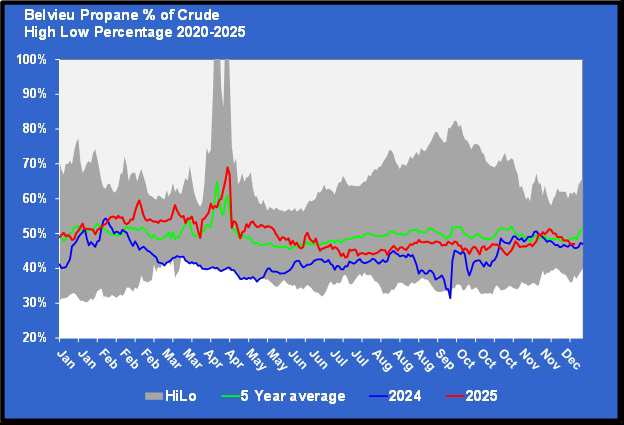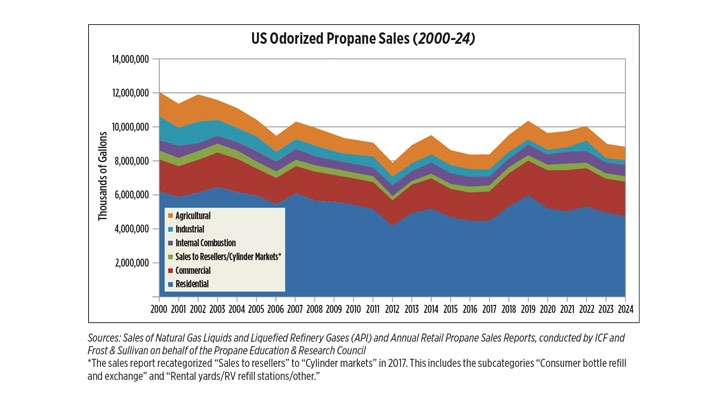Energy as a weapon in Russia’s invasion of Ukraine
Trader’s Corner, a weekly partnership with Cost Management Solutions, analyzes propane supply and pricing trends. This week, Mark Rachal, director of research and publications, looks back on the 3 1/2 years since Russia’s invasion of Ukraine.
Catch up on last week’s Trader’s Corner here: Propane demand ahead of the winter heating season
Three-and-a-half years after Russia invaded Ukraine, the senseless killing continues. The news is filled with ways that Western nations are trying to stop Russian crude exports to try to starve Russia of the revenue it needs to prosecute its war against Ukraine. For 3 1/2 years, those efforts have failed.
Many European countries stopped buying Russian energy, but they haven’t stopped using energy. They get their supplies from elsewhere. About all they have accomplished is making the supply chains of energy less efficient. They have tried economic sanctions on companies that move, transport and finance Russian crude exports. The result has been the formation of what is known as a “shadow fleet” of old tankers that are moving Russian crude. These tankers are largely uninsured and more susceptible to sinking and leaking, which can cause catastrophic environmental damage. That fleet is now 17 percent of the world’s oil tanker fleet.

China, India and Turkey are the primary buyers of Russian crude. The United States is trying a different approach. Instead of punishing companies that facilitate the movement of Russian crude, the United States is trying to punish countries that buy it. The United States has put large tariffs on the aforementioned countries for buying Russian crude, hurting trade between those countries and ours.
The result has been that those countries (which, in the case of India and China, have been adversaries) now have closer trade relationships. The ties between Russia, India, China and Turkey are stronger than ever. Increasingly, it feels as if it is the Western nations that are becoming isolated and having economic issues, not Russia and its partners. And given the size of the “shadow fleet,” there is no shortage of companies and countries willing to align themselves with Russia, India, China and Turkey over the West.
We wrote numerous Trader’s Corners after Russia’s invasion of Ukraine about what was being and could be done by the West to try to correct the mistake of becoming too dependent on Russia for energy. Largely, there was little to be done, at least in a reasonable time frame.
We blamed Ukraine’s neighbors (and still do) for causing its destruction. In a desire to be progressive and save the planet from evil hydrocarbons, European nations had been dismantling their hydrocarbon industries. They touted what they were doing and challenged the rest of the world to get on board. The thing was, this strategy didn’t stop the use of hydrocarbons; it simply meant that Europe stopped producing hydrocarbons and started buying them from Russia. That dependency opened the door for Russia’s invasion of Ukraine.
Keeping the current situation in mind, click here to look back on our Trader’s Corner article from March 29, 2022, one month after the invasion began: Why Russia is winning the energy war.
To subscribe to LP Gas’ weekly Trader’s Corner e-newsletter, click here.
















